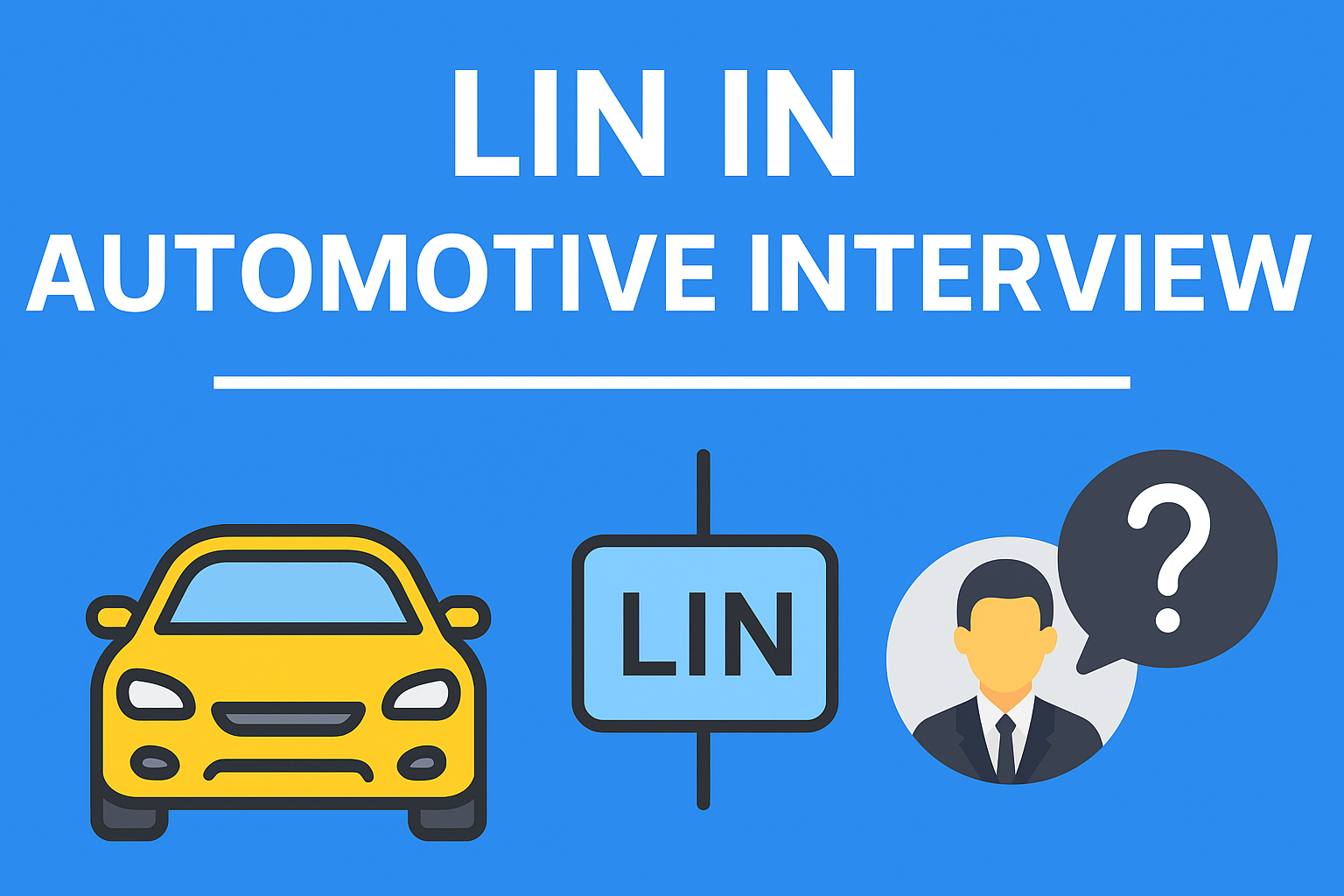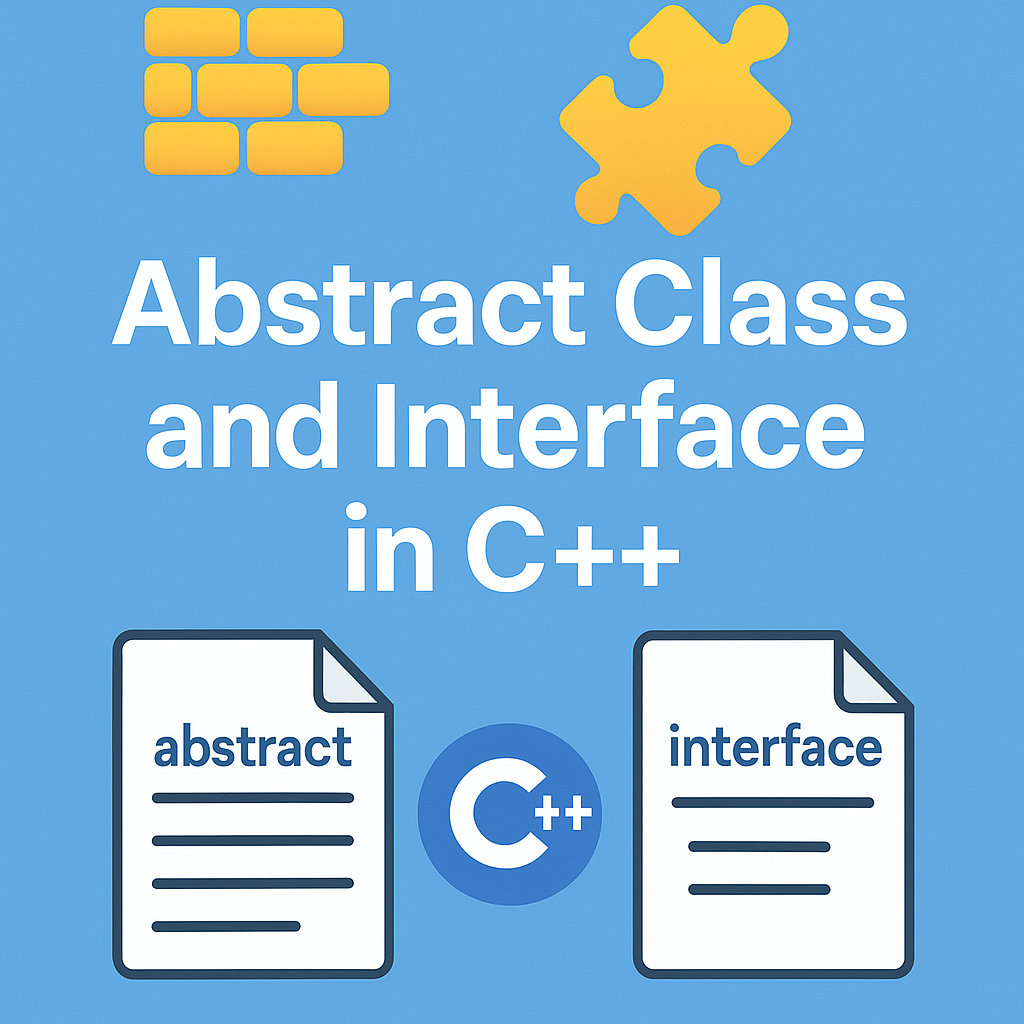LIN in Automotive Interview is a common topic for engineers in the automotive industry. This guide explains the LIN protocol, its applications, common interview questions, and preparation tips to help you succeed.
When it comes to automotive interviews, one topic that often surprises candidates is the Local Interconnect Network (LIN) protocol. While most engineers are familiar with CAN bus, LIN is equally important—especially for low-cost, non-critical systems in modern vehicles.
In this guide, we’ll break down what LIN is, why it matters in automotive engineering, and how you can prepare for interview questions related to it.
In this guide, we’ll break down what LIN is, why it matters in automotive engineering, and how you can prepare for interview questions related to it.
What Is LIN in Automotive Interview
The Local Interconnect Network (LIN) is a low-cost, single-wire, serial communication protocol used to connect various electronic control units (ECUs) and sensors in a vehicle.
Unlike CAN (Controller Area Network), which handles critical, high-speed communication, LIN is designed for simpler, non-time-critical functions, such as:
- Power window control
- Climate control systems
- Seat adjustment
- Sunroof operation
Key characteristics of LIN:
- Operates at up to 20 Kbps
- Works on a master-slave topology
- Uses single wire + ground (saving wiring costs)
- Includes synchronization and error detection mechanisms
Why Is LIN Important in Automotive Interviews?
LIN is widely used in automotive body electronics because it reduces wiring complexity and lowers manufacturing costs.
In LIN in Automotive Interview, hiring managers test LIN knowledge to see if you:
- Understand vehicle networking architectures
- Can differentiate between LIN and CAN protocols
- Know real-world use cases of LIN
- Are familiar with message framing, checksum, and diagnostics
Common LIN in Automotive Interview Questions
Here are some typical questions you might face:
- What is the LIN protocol, and where is it used in vehicles?
Tip: Highlight that it’s a low-speed, low-cost communication system for non-critical functions. - Explain the difference between LIN and CAN bus.
Tip: Compare speed, cost, complexity, and applications. - Describe the LIN frame structure.
Tip: Mention break field, sync field, identifier, data bytes, and checksum. - What are LIN nodes, and how are they classified?
Tip: Master node (controls communication) and slave nodes (respond to master requests). - Give real-world examples of LIN implementation.
Tip: Talk about wiper systems, mirror adjustment, and seat controls.
How to Prepare for a LIN-Focused Automotive Interview
- Understand the Basics – Review how LIN works, frame structure, and advantages over other protocols.
- Compare with CAN – Be ready to explain why certain functions use LIN instead of CAN.
- Know the Applications – Mention specific automotive systems that rely on LIN.
- Brush Up on Standards – Familiarize yourself with ISO 17987 (LIN protocol standard).
- Practice Real Examples – If possible, look at a LIN bus log or use tools like a logic analyzer for hands-on understanding.
Pro Tips for LIN in Automotive Interview Success
- Use clear, structured answers—break down your response into definition, working, and application.
- Relate your answers to practical automotive scenarios.
- Show that you understand both hardware and software aspects of LIN.
- If you have project experience with LIN, explain your role clearly.
Conclusion
In the evolving automotive industry, LIN remains a crucial protocol for reliable, cost-effective communication between vehicle subsystems. Whether you’re applying for an Automotive Engineer, Embedded Systems Engineer, or Vehicle Network Specialist role, understanding LIN can give you a competitive edge.
Frequently Asked Questions (FAQ)
1. What is this blog about?
This blog focuses on delivering beginner-friendly and in-depth tutorials, tips, and real-world examples in the field of embedded systems, programming, and technology trends.
2. Who can benefit from this blog?
Students, fresh graduates, working professionals, and tech enthusiasts who want to improve their skills in embedded systems, C/C++, IoT, and related technologies will find this blog useful.
3. Are the tutorials suitable for complete beginners?
Yes. All tutorials are designed with step-by-step explanations, making them easy to follow even if you have no prior experience.
4. Do I need any special tools to follow the projects?
Some projects require specific hardware or software tools. Each tutorial clearly lists the tools and setup required before you begin.
5. How often is the blog updated?
New tutorials, guides, and project ideas are added regularly to ensure you always have fresh and relevant content.
6. Can I request a specific topic or tutorial?
Yes, you can share your topic requests via the contact form. If it aligns with the blog’s focus, it will be considered for future posts.
You can also Visit other tutorials of Embedded Prep
- Multithreading in C++
- Multithreading Interview Questions
- Multithreading in Operating System
- Multithreading in Java
- POSIX Threads pthread Beginner’s Guide in C/C++
- Speed Up Code using Multithreading
- Limitations of Multithreading
- Common Issues in Multithreading
- Multithreading Program with One Thread for Addition and One for Multiplication
- Advantage of Multithreading
- Disadvantages of Multithreading
- Applications of Multithreading: How Multithreading Makes Modern Software Faster and Smarter”
Mr. Raj Kumar is a highly experienced Technical Content Engineer with 7 years of dedicated expertise in the intricate field of embedded systems. At Embedded Prep, Raj is at the forefront of creating and curating high-quality technical content designed to educate and empower aspiring and seasoned professionals in the embedded domain.
Throughout his career, Raj has honed a unique skill set that bridges the gap between deep technical understanding and effective communication. His work encompasses a wide range of educational materials, including in-depth tutorials, practical guides, course modules, and insightful articles focused on embedded hardware and software solutions. He possesses a strong grasp of embedded architectures, microcontrollers, real-time operating systems (RTOS), firmware development, and various communication protocols relevant to the embedded industry.
Raj is adept at collaborating closely with subject matter experts, engineers, and instructional designers to ensure the accuracy, completeness, and pedagogical effectiveness of the content. His meticulous attention to detail and commitment to clarity are instrumental in transforming complex embedded concepts into easily digestible and engaging learning experiences. At Embedded Prep, he plays a crucial role in building a robust knowledge base that helps learners master the complexities of embedded technologies.




Leave a Reply